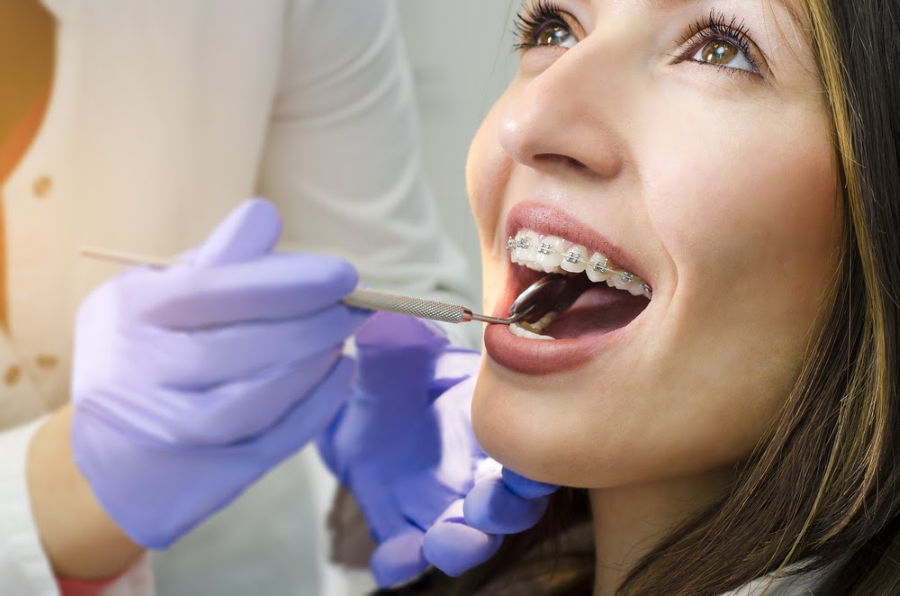Legacy Orthodontics Fundamentals Explained
Unknown Facts About Legacy Orthodontics
Table of ContentsNot known Details About Legacy Orthodontics The Legacy Orthodontics StatementsAn Unbiased View of Legacy OrthodonticsFacts About Legacy Orthodontics RevealedIndicators on Legacy Orthodontics You Should Know
At Advanced Orthodontics, we supply individuals with a holistic therapy experience. In enhancement, we use flexible treatment schedules, flexible repayment alternatives and an enjoyable, enjoyable experience. leesburg orthodontics. Telephone call ( 480) 357-4900 today for additional information and routine a consultation.An orthodontist is a dental professional educated to identify, prevent, and treat teeth and jaw irregularities. Orthodontists function with individuals of all ages, from children to adults.
Malocclusion, or misaligned teeth, can result in oral problems, consisting of dental cavity, gum disease, and difficult or unpleasant eating. Not everyone is birthed with straight teeth. If you have a bad bite or big rooms between your teeth, you may wish to seek advice from a dental practitioner concentrating on orthodontic care.
Legacy Orthodontics Fundamentals Explained
( Image Credit: DigitalVision/Getty Images) Orthodontists make use of dealt with and detachable dental devices, like braces, retainers, and bands, to alter the placement of teeth in your mouth. Orthodontic therapy is for dental problems, including: Jagged teethBite troubles, like an overbite or an underbiteCrowded teeth or teeth that are as well far apartJaw misalignmentThe goal of orthodontic treatment is to enhance your bite.
A healthy bite ensures you can consume, chew, and speak properly. While you could think of orthodontists as generally for youngsters or teenagers that require braces, they can fix oral problems at any age. Orthodontists participate in university, oral school, and orthodontic school. After graduation, they invest 2 or 3 years in an orthodontic residency program.
All orthodontists are dental professionals, yet not all dental practitioners are orthodontists. Orthodontic residency programs use extensive, focused direction for dental experts. They concentrate on two locations: How to properly and securely move teeth Exactly how to effectively lead advancement in the teeth, jaw, and faceOnce an orthodontist has finished training, they have the choice to come to be board licensed.
All About Legacy Orthodontics
Imbalance, or malocclusion, is one of the most typical reason people see an orthodontist. It is hereditary and is the outcome of size distinctions in between the upper and reduced jaw or between the jaw and teeth. Malocclusion leads to tooth overcrowding, an irregular jaw, or uneven bite patterns. Malocclusion is generally treated with: Your orthodontist affixes steel, ceramic, or plastic square bonds to your teeth.
If you have just small malocclusion, you may have the ability to use clear dental braces, called aligners, rather of conventional dental braces (https://canvas.instructure.com/eportfolios/3201746/Home/The_Best_Leesburg_Orthodontist_Transforming_Smiles_Changing_Lives). Some people need a headgear to assist move teeth into line with stress from outside the mouth. After braces or aligners, you'll require to put on a retainer. A retainer is a custom gadget that keeps your teeth in position.
They're frequently used on children. They can produce additional space in the mouth without needing to pull teeth. If you have a significant underbite or overbite, you could require orthognathic surgery (also called orthodontic surgical treatment) to lengthen or shorten your jaw. Orthodontists use cords, surgical screws, or plates to support your jaw bone.
You might need to see an orthodontist if you have: Crowding or otherwise sufficient area for all of your teethOverbite, when your top teeth come over your base teethUnderbite, when your bottom teeth are too far forwardSpacing or concerns with gapsCrossbite, which is when your upper teeth fit behind your base teeth when your mouth is closedOpen bite or an upright space between your front bottom and top teethMisplaced midline, when the facility of your bottom and top teeth don't align Remedying a dental malocclusion can: Make attacking, chewing, and talking easierImprove the balance of our face and your overall appearanceEase discomfort from temporomandibular joint disordersDifferent your teeth and make them easier see this website to clean up, helping protect against dental caries or tooth cavities It's often a dental practitioner who first notices misaligned teeth during a routine test.
Legacy Orthodontics for Beginners

During your first orthodontic consultation, you'll likely have: A dental examPhotos taken of your face and smileDental X-raysPanoramic (360 level) X-rays of your face and headImpressions to produce molds of your teethThese examinations will certainly assist your orthodontist recognize exactly how to proceed with your treatment. clear braces. An orthodontist is a dental professional that's had training to treat your teeth and jaw
Orthodontists might perform surgical treatment, exams,X-rays,and even more to help you attain a more comfy, much healthier smile. An orthodontist is concentrated on your bite, so something like a broken tooth would certainly be taken care of by a dentist. Orthodontists are dental practitioners however not all dental professionals are orthodontists. Orthodontists are concentrated on your bite, or the means your teeth fit together, and the straightness of your teeth.
Ever wondered how celebrities always appear to have completely lined up teeth? The response often lies in the skilled hands of an orthodontist. What specifically does an orthodontist do? Orthodontists are oral experts who concentrate on fixing irregularities in the teeth and jaws. Their competence exceeds simply creating a stunning smile; it includes boosting your total dental health and wellness and function.
Facts About Legacy Orthodontics Uncovered

While braces are the most generally recognized orthodontic treatment, orthodontists have a diverse toolkit at their disposal. The specific technique picked depends on the intensity of the instance, the individual's age, and specific choices. These tried-and-true braces utilize a system of brackets adhered to the teeth and attached by cords.
These removable trays are personalized to considerably shift the teeth's placement. In instances of narrow jaws, palatal expanders can be made use of to develop space for correct tooth alignment.